Al Roth
description: an American economist known for his work in game theory, market design, and experimental economics. He is a Nobel laureate in Economics.
9 results
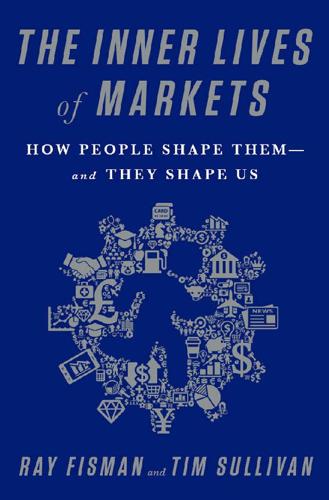
The Inner Lives of Markets: How People Shape Them—And They Shape Us
by
Tim Sullivan
Published 6 Jun 2016
And it left potential clerks early in their law school careers needing to commit to an offer before exploring other options—or even knowing what kind of law they wished to practice. It happened to the market for slots at sororities, too, which used to be reserved for college seniors, until popular girls started getting invitations to join at the start of their junior, then sophomore, then freshman year. (According to market design guru Al Roth, one theory holds that the term “fraternity/sorority rush,” which today describes the process by which sororities and fraternities recruit new members, comes from the frenzied competition among sororities to lock in new members.4) It’s what prompted medical residency programs to develop a centralized clearinghouse in the 1940s to fend off students receiving exploding offers before they were done with their intro to anatomy course.
…
But that’s really all that Gale and Shapley provided: a conceptual framework that market designers have, for several decades now, been applying, evaluating, and refining. They’ve learned from its successes and, unfortunately, learned even more from its inevitable failures: modeling real-life exchanges is an imprecise, iterative process in which many of us find ourselves as experimental subjects. The Complicated Job of Engineering Matches Market designer Al Roth likes to use a bridge-building metaphor to explain the contrast between his own work and that of design pioneers like Shapley. Suppose you want to build a suspension bridge connecting Brooklyn and Manhattan. In confronting decisions like where to place the suspension cables and how thick each should be, you’d better have paid attention in physics class.
…
At no point in the process can you force someone to give up an organ, so it was critical that both donors made their contribution at the same time, lest the second donor back out. You might see why this ad hoc kidney barter system never really amounted to much, rarely getting past the teens in any given year: something like one or two donor-recipient exchanges for every ten thousand cases languishing on the transplant wait list. The market lacked what market designer Al Roth calls thickness—the presence of enough “traders” at the kidney swap to make it worth searching for a partner. It’s a self-fulfilling prophecy: since no one else is showing up to trade, it isn’t worthwhile for anyone to participate. And as a result, there was no kidney exchange platform for traders to show up to in search of a match.
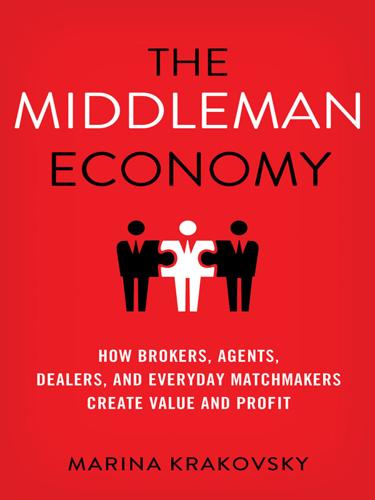
The Middleman Economy: How Brokers, Agents, Dealers, and Everyday Matchmakers Create Value and Profit
by
Marina Krakovsky
Published 14 Sep 2015
By acting as our proxy, the Insulator can enable us to be honest and bold without damaging our image or important business relationships. Instead of connecting two people who don’t otherwise know each other, as a Bridge would, the Insulator steps in when it’s best to keep the two parties apart. These ideas about insulation are very familiar to economist Al Roth, who won the 2012 Nobel Prize for his extraordinarily practical work in applying game theory to the design of real-world markets. Roth says that in every market he’s ever studied, there are some things that some people consider “repugnant” where middlemen can help. “There are some things you’re not allowed to do for yourself but that others can do for you,” Roth says.7 In a negotiation, for example, “It seems impolite for me to say that I have the upper hand, and I should really get 90 percent.
…
During the holdout, Bryan Goldberg, a senior writer for The Bleacher Report, wrote a column accusing Crabtree’s agent, Eugene Parker, of “brainwashing and ruining the career of a young man who does not know any better.”10 After the deal was done, Pete Prisco, NFL columnist for CBS Sports, proclaimed that “his agent did him a major disservice by keeping him out.”11 The pundits knew that an agent wouldn’t do what the client didn’t want, but still they blamed the agent. Having Their Cake and Eating It Too * * * I first heard Crabtree’s story from a young experimental economist named Lucas Coffman, an assistant professor at Ohio State University who had been a doctoral student of Al Roth’s. Coffman has more than a passing interest in sports. By his own account, he follows football and baseball and basketball more than he should.12 He’s thought so much about the problems with the NFL draft that he’s proposed an alternative. Among the many problems in the current system is that teams pick players one at a time instead of bidding on a group that would play well together.
…
When a colleague of mine accompanied her husband to his class reunion, and a classmate asked him what he’d been up to, he gave a brief answer that she didn’t think did justice to his accomplishments, so she piped up to brag on his behalf, mentioning his recent promotion. He came out looking not only more accomplished, but more modest, too. Similarly, the morning Al Roth won the Nobel Prize and Stanford held a press conference, it was not Roth who explained what made his work so impressive, but the department chairman, economist Jon Levin, who mentioned that he was speaking because it would be awkward for Roth to do so. Whether you put in a good word for a deserving colleague or make a request that a friend would feel awkward asking for herself, playing the Insulator is another way to win friends and influence people.

Cogs and Monsters: What Economics Is, and What It Should Be
by
Diane Coyle
Published 11 Oct 2021
Many people would agree with his examples concerning warfare, or justice: we do not want a market in evading the draft or in buying the desired outcome of a trial. He argues for excluding medicine from the market—should only the rich be able to buy a kidney or heart? Most Britons, devoted to the more or less free-to-use National Health Service (NHS), agree. Here, though, the difference between values and processes is relevant. Economics Nobel Prize winner Al Roth—someone who has given much thought to what he describes as ‘repugnant’ markets—designed a kidney exchange; no money changes hands, yet it is organised as a market matching suppliers and users. Within just a few years of his innovation, thirty people in New England had received kidneys—without putting a price on them—through this market (Roth, Sönmez, and Ünver 2004; Roth 2007).9 By now, thousands of people around the world have benefited.
…
In the digital economy we have massive economies of scale too, but combined with increasing variety and personalisation. For instance, through digital matching platforms like Airbnb, OpenTable, Uber, or Amazon Marketplace, people are able to satisfy highly specific individual needs or preferences. In some cases, no money is exchanged, not only in the case of Al Roth’s famous kidney exchange described earlier, but also now the numerous, non-profit sharing economy platforms exchanging unwanted goods or sharing equipment, or dogs. As with previous episodes of major innovation, from printing to electricity, enormous value is being created. Yet it is not much of an exaggeration to say these phenomena verge on the invisible in the current framework of economic statistics.
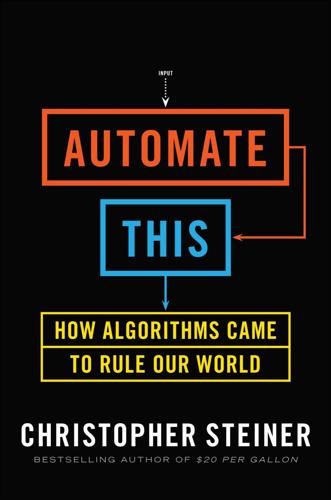
Automate This: How Algorithms Came to Rule Our World
by
Christopher Steiner
Published 29 Aug 2012
While medicine seems to be rather unhackable on its face, the truth is that it’s already been shaken by algorithms—and the real changes are yet to come. THE ARBITER OF LIFE Sitting in an audience in 2004, Tuomas Sandholm, the creator of poker algorithms, found himself riveted by a speaker and his topic. Al Roth, a Harvard economist, was talking to the World Congress of the Game Theory Society in Marseille, France. Roth was explaining the challenges facing kidney transplant networks in dealing with the circumstances facing each donor or recipient: blood type, location, health, age, relatives, and so on. With tens of thousands of people sitting on waiting lists in America and across the world, maximizing the number of matches between donors and patients is the biggest mission facing the transplant system.
…
Finding an opposite pair that satisfies all necessary matching requirements, however, is something of a long shot. Introducing more pairs to the mix creates more available matches, at least theoretically. But throwing thousands of pairs into a bucket and attempting to sort them out efficiently is complicated. Before Al Roth started tinkering with new methods for matching pairs, they were put together by hand with little more than a spreadsheet. If a match wasn’t patently obvious, it wasn’t made. Before Roth’s work, in fact, there were no national or regional pools for kidney matching anywhere in the United States. Roth developed a system that automatically found the most efficient way to put pairs from the pool together, but the algorithm was limited in the numbers it could handle, a problem he lamented at the lectern in Marseille.
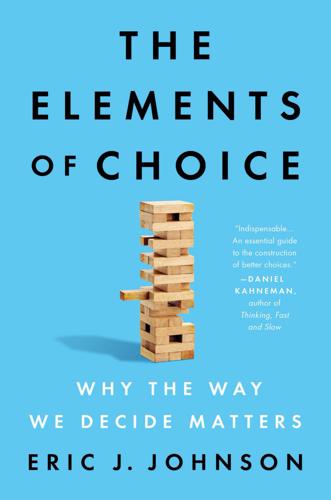
The Elements of Choice: Why the Way We Decide Matters
by
Eric J. Johnson
Published 12 Oct 2021
Any decisions made in the design process will have a substantial effect on the student’s selections and, ultimately, the high school they attend. After all, if a school is not listed, it is unlikely to be chosen. New York City was one of the first localities to use school choice for public schools. In 2003 it reached out to Harvard University economist (and future Nobel laureate) Al Roth. Along with Atila Abdulkadiroğlu and Pathak Parag, he designed a system intended to encourage families and schools to make good choices and to get kids to attend better schools—which would, theoretically, put pressure on poor-performing schools to improve. Roth is no ivory tower ideologue. In fact, he is a product of the New York public schools himself, the son of two public high school teachers, Ernest and Lillian, who taught typing and shorthand in Queens to working-class women training to become secretaries.
…
This includes Jessica Anker, Jack Soll, Maya Bar-Hillel, Wändi Bruine de Bruin, Raluca Ursu, and Jay Russo. And thanks to Richard Thaler for many discussions and comments on organ donation. I have done interviews by phone and email with several researchers for background and to test out ideas. These include Irwin Levin, Gerald Häubl, Rick Larrick, Al Roth, and Scott Halpern. These conversations added clarity and color. I have tried to highlight the contributions of co-authors of my prior work throughout the book and won’t repeat my thanks here, but I’m appreciative of all the ideas, fun, patience, and friendship. Finally, there is always the perfunctory acknowledgment to the long-suffering spouse.

Markets, State, and People: Economics for Public Policy
by
Diane Coyle
Published 14 Jan 2020
Market design is a thriving area of economic research, which has found applications ranging from government bond auctions or spectrum auctions to transport planning and matching donor kidneys to recipients (box 2.9). For all the controversy associated with the prominent big platforms, the potential improvement in economic efficiency from these technologies—smartphones, pervasive broadband, and algorithms—could be significant. Box 2.9. Matching markets Economist Al Roth won the Nobel Prize (along with Lloyd Shapley) for his work on algorithms for acceptance markets. The best known is the deferred acceptance rule, which can be used in applications ranging from school admissions to marriage markets. Suppose there is a set of men M (with a typical man m ∈ M) and a set of women W (w ∈ W) and the aim is to match them in w,m pairs.
…
Jean Tirole (2014), “Market Failures and Public Policy,” Nobel Prize lecture, https://www.nobelprize.org/nobel_prizes/economic-sciences/laureates/2014/tirole-lecture.pdf. On Specific Markets and Markets in General Richard Green (2005), “Electricity and Markets,” Oxford Review of Economic Policy 21, no. 1. John McMillan (2002), Reinventing the Bazaar, W. W. Norton & Co. Al Roth (2015), Who Gets What and Why?, William Collins. Jean Tirole (2018), Economics for the Common Good, Princeton University Press, chapters 13, 14, and 16. CHAPTER 3 The Government’s Role in Production As chapters 1 and 2 described, the modern state plays a significant role in the economy, in setting the framework of laws and regulations, including competition policy, and in terms of government expenditure on various forms of social security and welfare (covered in chapter 6).

A Beautiful Mind
by
Sylvia Nasar
Published 11 Jun 1998
The game mimicked the general, “n-person” game of von Neumann’s theory. Subjects were told they could win cash by forming coalitions, and the specific amounts that would be awarded to each possible coalition. To be eligible to win, however, the coalition partners had to commit in advance to a given division of the winnings. According to Al Roth, a leading experimental economist, the experiment yielded two insights that proved highly influential.18 For one thing, it drew attention to information possessed by participants: If the same players play the game repeatedly, the authors concluded, players tend to “regard a run of plays as a single play of a more complicated game.”
…
Lindbeck, who was spending the spring term in Cambridge, oversaw the preparations by telephone. The dozen or so invited speakers represented two generations of leading game-theory researchers, mostly theorists and experimentalists, among them John Harsanyi, Reinhard Selten, Robert Aumann, David Kreps, Ariel Rubinstein, Al Roth, Paul Milgrom, and Eric Maskin. The topic? Rationality and Equilibrium in Strategic Interaction. Most of the participants took it for granted that they were performing for the benefit of the prize committee and assumed that the three graybeards in the group, Harsanyi, Selten, and Aumann, were the likely Laureates.34 Aumann, the white-bearded Israeli dean of game theory, was strutting around “as if he had already won.”
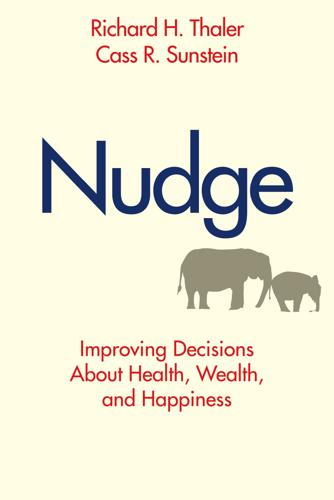
Nudge: Improving Decisions About Health, Wealth, and Happiness
by
Richard H. Thaler
and
Cass R. Sunstein
Published 7 Apr 2008
They performed better than less affluent, less educated parents, who routinely listed an overdemanded school as a second choice, the worst mistake they could make. Who knows how many of their children lost out on access to first-rate educations because of it? The Boston system is still in place around the country, though not in Boston. In 2003 a group of economists led by Al Roth at Harvard pointed out these problems to initially skeptical Boston school administrators. After letting the economists poke around in the internal data, the administrators became convinced of their system’s flaws.6 In response, they adopted the economists’ new strategy-proof choice mechanism, based on one used to match hospitals and medical residents.
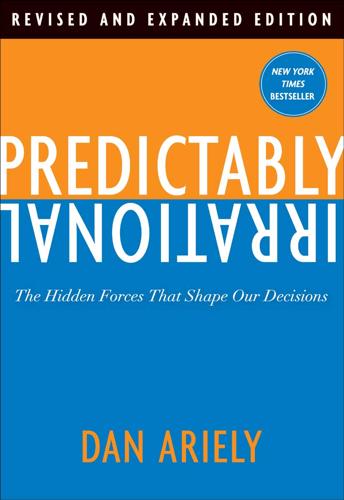
Predictably Irrational, Revised and Expanded Edition: The Hidden Forces That Shape Our Decisions
by
Dan Ariely
Published 19 Feb 2007
What we’ve learned is that relying on standard economic theory alone as a guiding principle for building markets and institutions might, in fact, be dangerous. It has become tragically clear that the mistakes we all make are not at all random, but part and parcel of the human condition. Worse, our mistakes of judgment can aggregate in the market, sparking a scenario in which, much like an earthquake, no one has any idea what is happening. (Al Roth, an economist at Harvard, and one of the smartest people I know, has summarized this issue by saying, “In theory, there is no difference between theory and practice, but in practice there is a great deal of difference.”) A few days after Greenspan’s congressional testimony, the New York Times columnist David Brooks wrote that Greenspan’s confession would “…amount to a coming-out party for behavioral economists and others who are bringing sophisticated psychology to the realm of public policy.